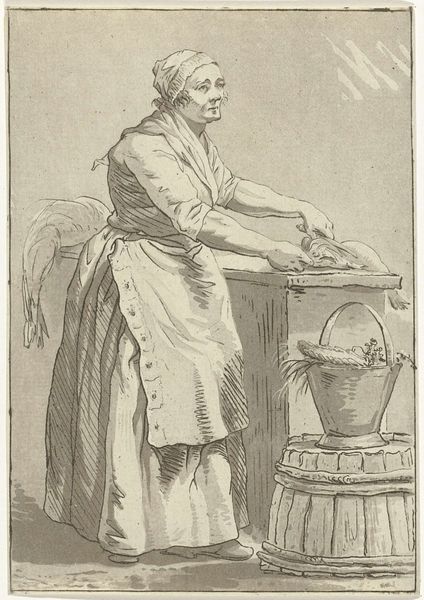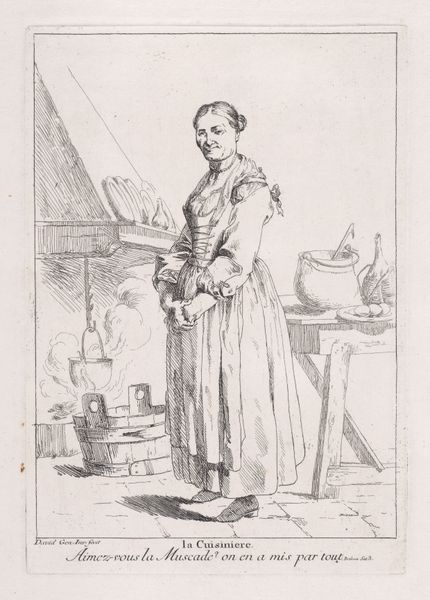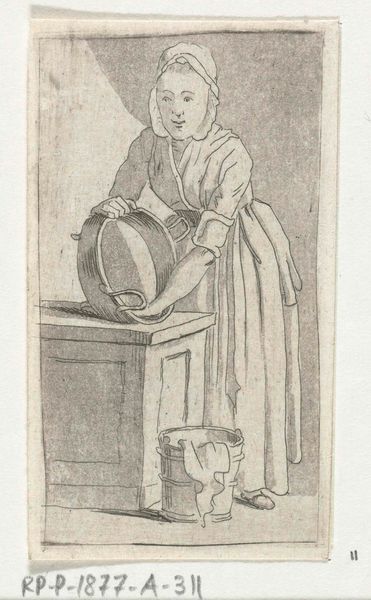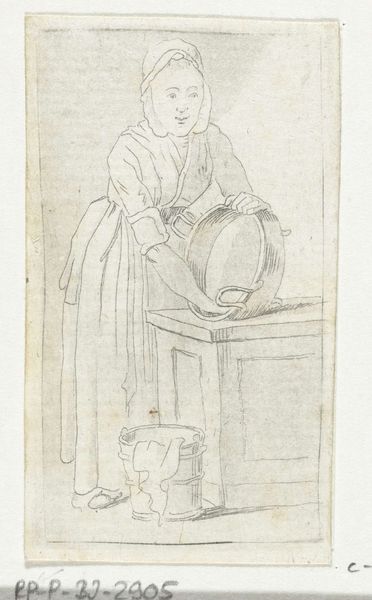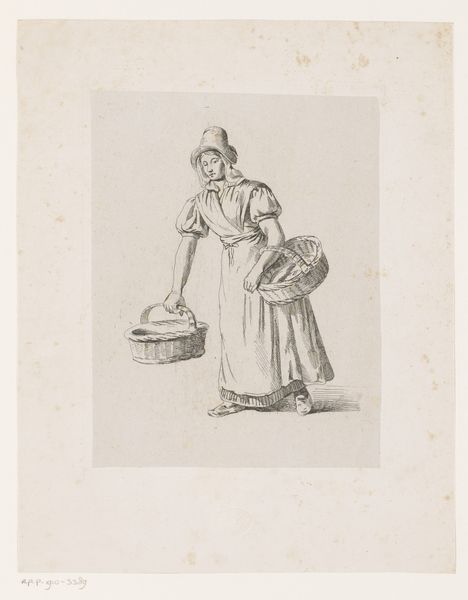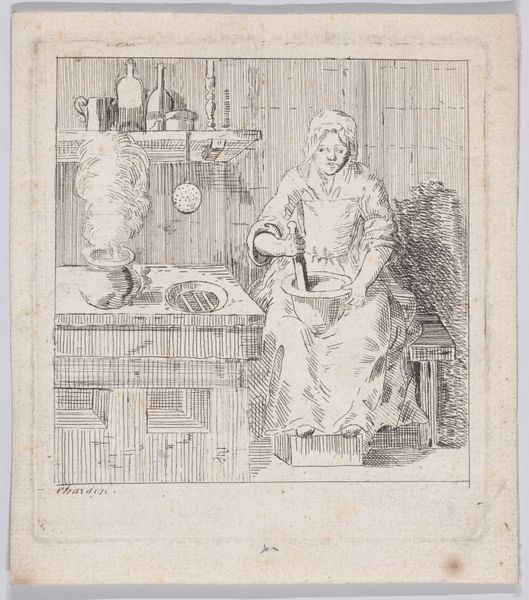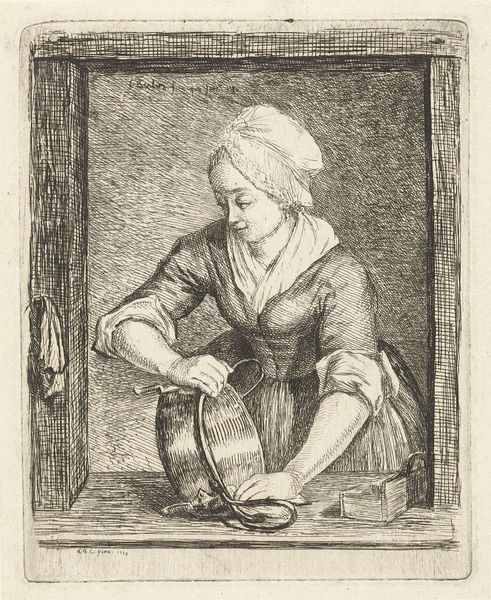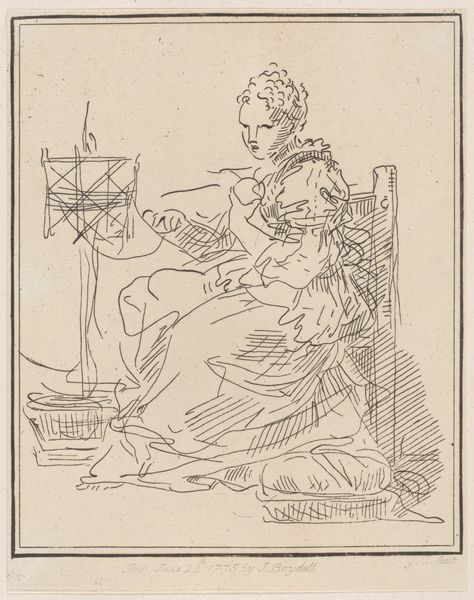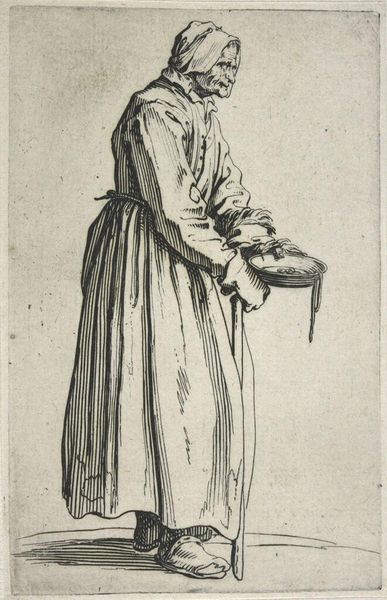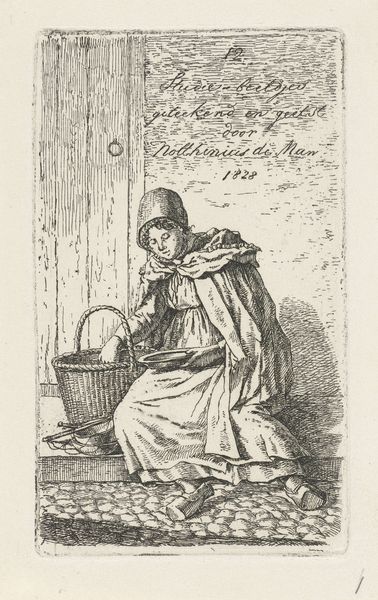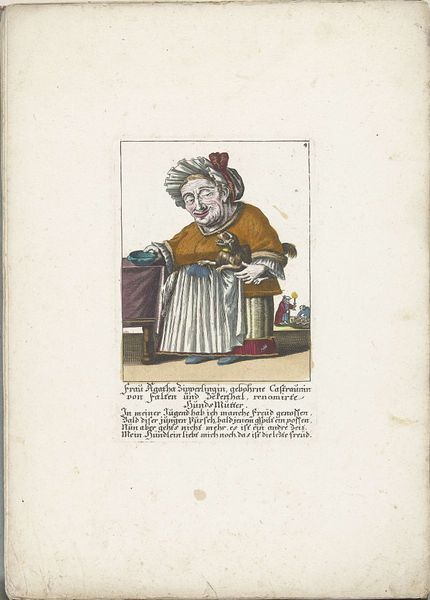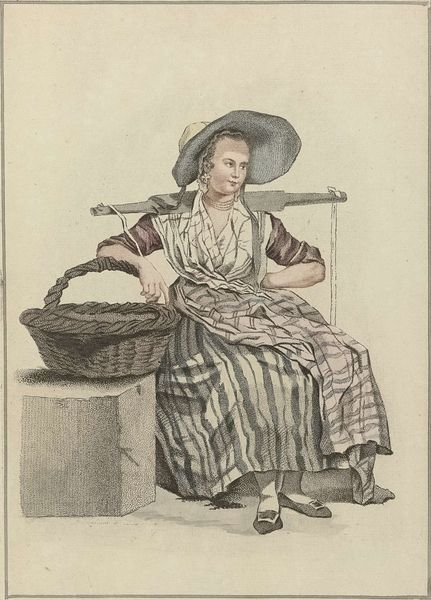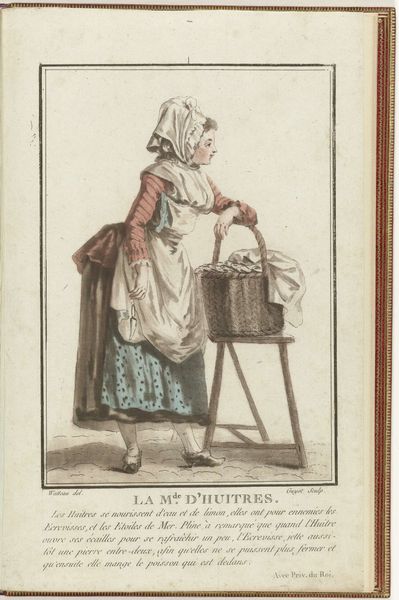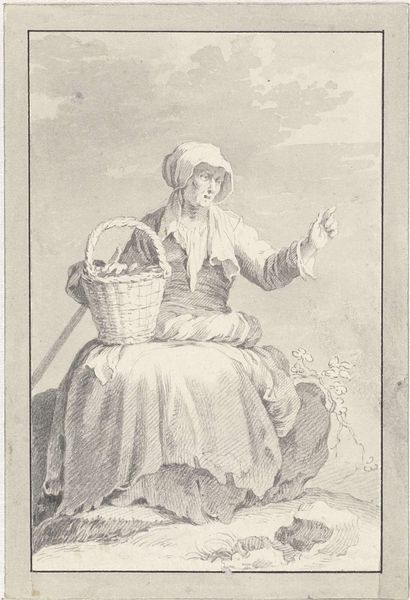
drawing, paper, ink
#
portrait
#
drawing
#
paper
#
ink
#
genre-painting
#
realism
Dimensions: height 179 mm, width 128 mm
Copyright: Rijks Museum: Open Domain
Editor: So, here we have Hermanus Fock's "Vis schoonmakende vrouw," made sometime between 1781 and 1822. It's an ink drawing on paper of a woman cleaning fish. It feels very…stark. Simple, even. What do you see in this piece that might go beyond the surface? Curator: This piece offers a potent glimpse into the daily lives of working-class women during a period of significant social upheaval. Consider the era – the late 18th and early 19th centuries were marked by revolutions, both political and industrial. Fock, instead of depicting grand historical events, chooses a genre scene: a woman performing the laborious task of cleaning fish. How might this seemingly simple act speak to broader social structures? Editor: I suppose it shows the roles women occupied? Their everyday reality. Curator: Exactly. This image provides a lens through which we can examine issues of gender and class. Look at the woman's posture, her clothing. Are these markers of her social standing? Think about how her labor, often invisible and unvalued, contributes to the economic ecosystem of her community. Also, consider the 'realism' style in the description; could that indicate the artwork resists idealizing representations? Editor: I hadn't thought about it that way. It's easy to overlook the layers of meaning embedded in such an ordinary scene. The realism could be seen as a political statement itself. Curator: Precisely! And it encourages us to question whose stories are told and how, even through something as simple as a drawing of a woman cleaning fish. Editor: I definitely see the drawing in a different light now. It makes me wonder about all the untold stories hidden in plain sight in other artworks. Curator: And that curiosity, that critical lens, is what art history is all about!
Comments
No comments
Be the first to comment and join the conversation on the ultimate creative platform.
